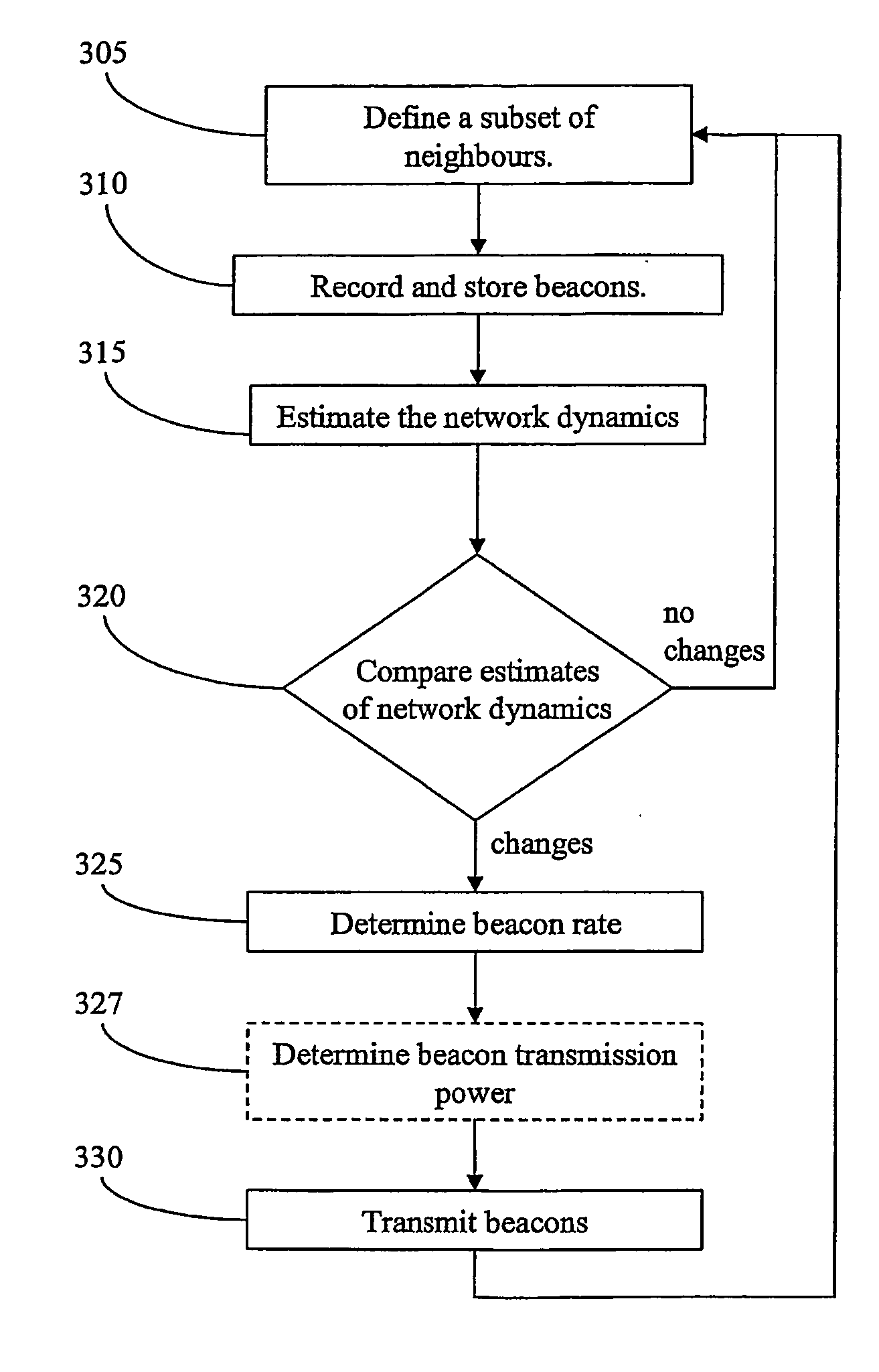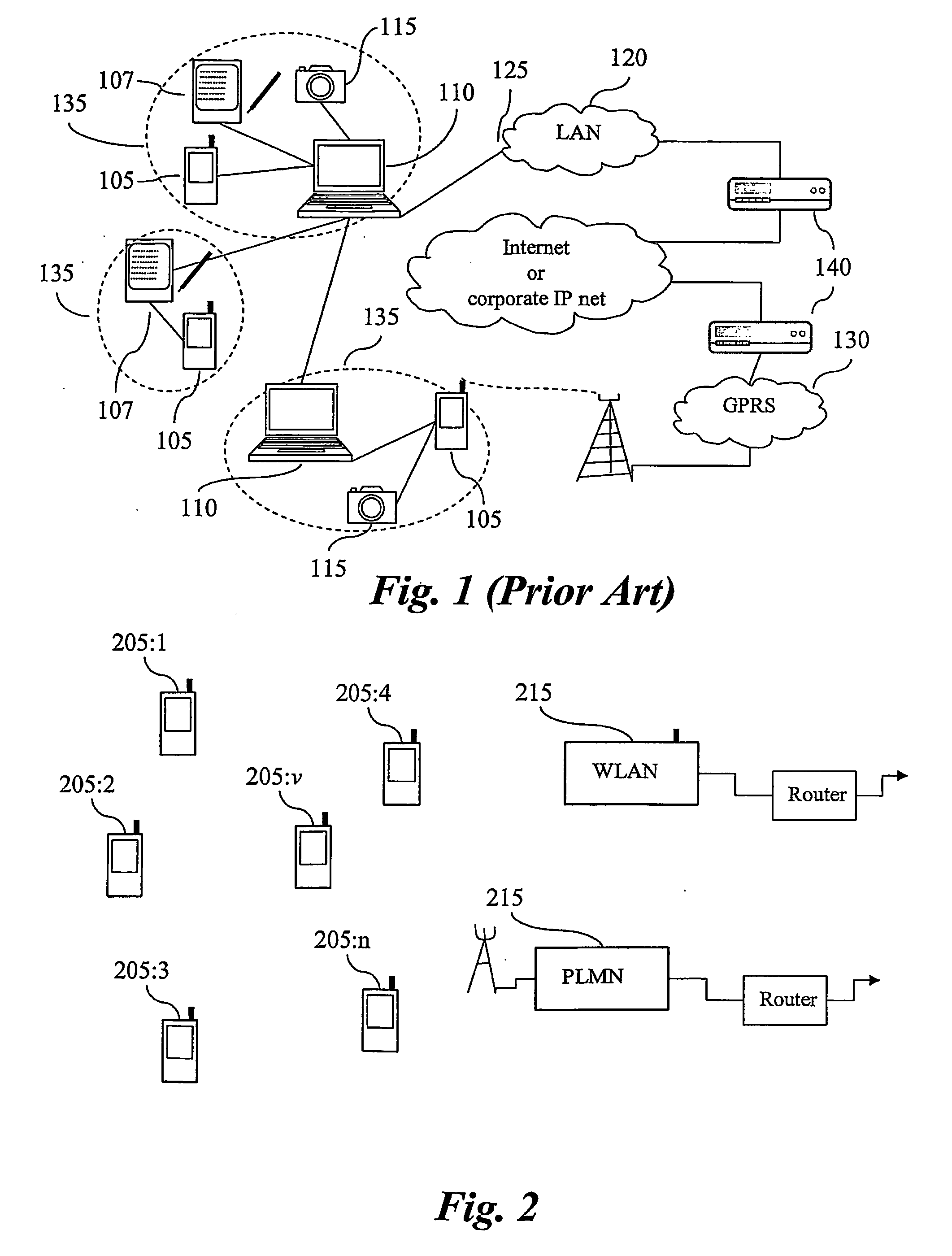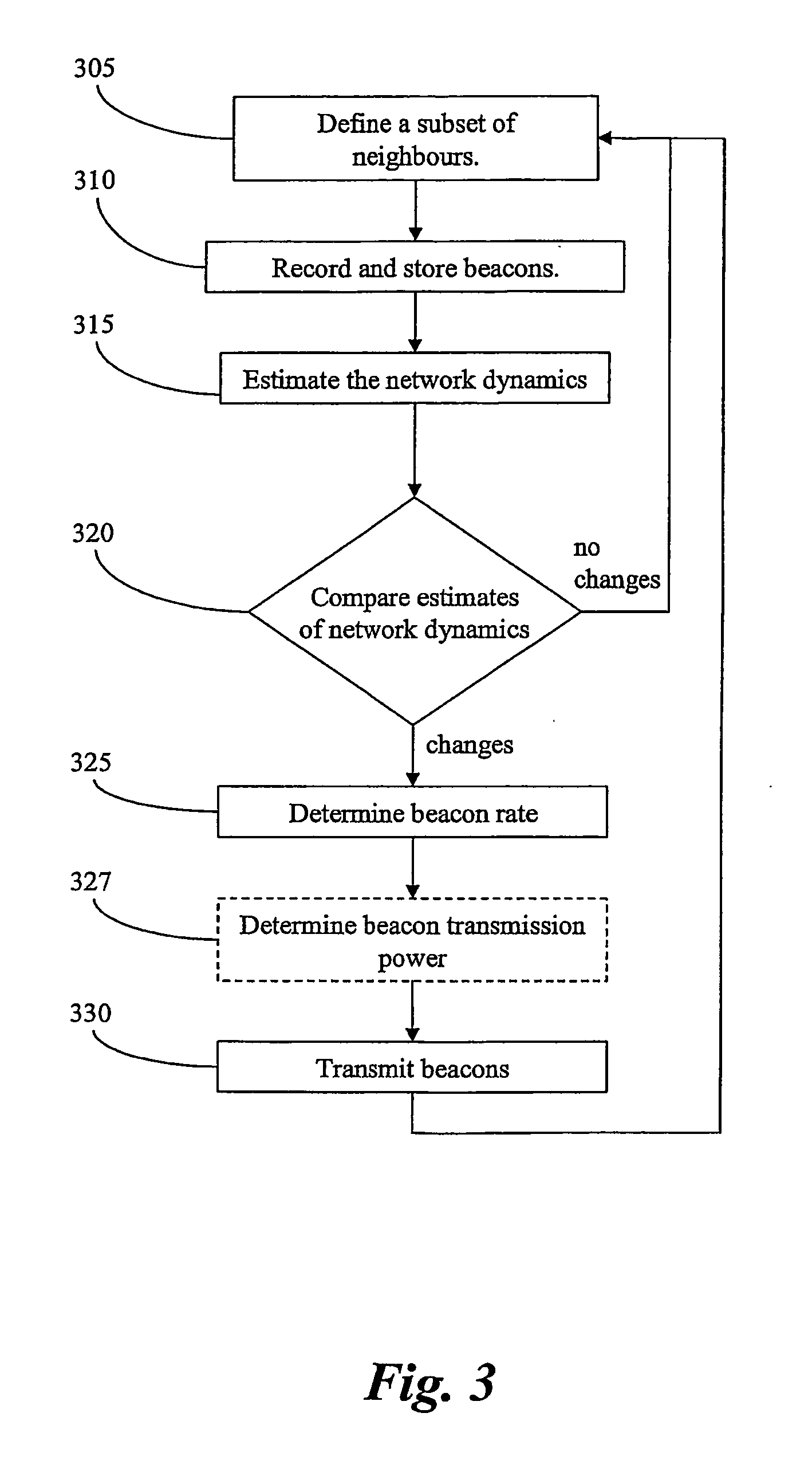Method And Arrangement In Wireless Ad Hoc Or Multihop Networks
a wireless ad hoc or multi-hop network and wireless technology, applied in the field of wireless multi-hop or ad hoc communication networks, can solve the problems of limiting the drawbacks of beaconing, affecting the accuracy of the topology map, and affecting the efficiency of connection maintenance, so as to improve the throughput of connections, improve the accuracy of the topology map, and improve the effect of connection accuracy
- Summary
- Abstract
- Description
- Claims
- Application Information
AI Technical Summary
Benefits of technology
Problems solved by technology
Method used
Image
Examples
first embodiment
[0036]Considering the mobile radio node 205:ν, the method according to the invention comprises the following main steps, preferably to be executed in each radio node 205, 215, which steps are illustrated in the flowchart of FIG. 3.
305: Define a Subset of Neighbours.
[0037]It is often not feasible to take all radio nodes in the network under consideration. Therefore a subset of neighbouring radio nodes is defined for the mobile radio node 205:ν. The subset, denoted NBν, may comprise a predetermined number of the closest radio nodes, for example the ten closest neighbours. Alternatively radio nodes within a predetermined distance are comprised in the subset. Preferably, distances relates to the path loss of the radio signal of the beacon message, but other form of measures of distances may be used, if such are available, e.g. by the use of GPS.
310: Record and Store Beacons.
[0038]The mobile radio node 205:ν record beacon messages from each of the neighbours in the subset NBν and stores ...
second embodiment
[0045]In the present invention the mobile radio node 205:ν determines a beacon rate and possibly a transmit power for each beacon it will transmit. Steps 315-325 (327) will then be replaced by steps 315′, and 330 by 330′, according to:
315′: Determine Beacon Rate and Transmission Power.
[0046]The mobile radio node 205:ν determines the beacon rate and possibly transmit power for the next beacon based on the path loss history of the radio nodes in the subset NBν.
330′: Transmit Beacons.
[0047]The mobile radio node 205:ν transmit a beacon adapted to the network dynamics as determined in step 315′.
[0048]This alternative embodiment may be described in a more formalistic way in which the transmit power PTXi (ν) and the beacon rate Bratei (ν) for the i:th beacon of the mobile radio node 205:ν may be calculated as a function of the path loss history:
PTXi(ν)=ƒ1(Gkk;jkεJk,kεNBν), (1)
Bratei(ν)=ƒ2(Gkk;jkεJk,kεNBν), (2)
wherein Gjk is the path loss towards radio node k for the j:th beacon received ...
fourth embodiment
[0054]The method according to the present invention may be implemented in various ways. the invention exemplifies a possible implementation. In this embodiment of the invention, the transmit power and beacon rate are based on the previous transmit power and beacon rate and the absolute value of the relative difference in path loss |ΔGjk|, i.e.:
ΔGjk=Gjk-Gjk-1Gjk-1(3)
and hence the transmit power and beacon rate is calculated as:
PTXi(ν)=ƒ1(PTXi−1(ν),Gjk,ΔGjk;iεI,jkεJk,kεNBν) (4)
Bratei(ν)=ƒ2(Bratei−1(ν),Gjk,ΔGjk;iεI,jkεJk,kεNBν) (5)
wherein I is the (possibly truncated) history of beacons transmitted by the mobile radio node 205:ν. The embodiment is convenient and efficient in that the history of the beacons are “reused” as the relative difference ΔGjk is considered.
[0055]The present invention makes it possible to minimise the overhead related to beacon messages in an ad hoc or multihop network. The accuracy of the topology map is good, and connections are efficiently maintained when t...
PUM
 Login to View More
Login to View More Abstract
Description
Claims
Application Information
 Login to View More
Login to View More - R&D
- Intellectual Property
- Life Sciences
- Materials
- Tech Scout
- Unparalleled Data Quality
- Higher Quality Content
- 60% Fewer Hallucinations
Browse by: Latest US Patents, China's latest patents, Technical Efficacy Thesaurus, Application Domain, Technology Topic, Popular Technical Reports.
© 2025 PatSnap. All rights reserved.Legal|Privacy policy|Modern Slavery Act Transparency Statement|Sitemap|About US| Contact US: help@patsnap.com



